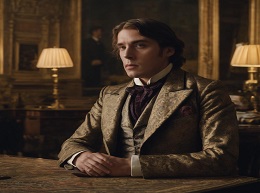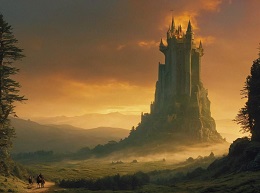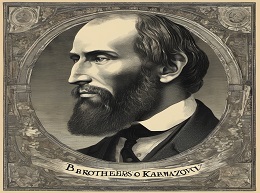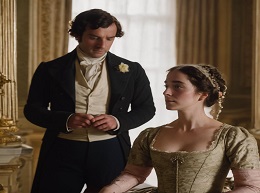The Picture of Dorian Gray

"The Picture of Dorian Gray" is a novel written by Irish author Oscar Wilde, first published in 1890. It's a Gothic and philosophical tale that explores themes of vanity, hedonism, and the consequences of moral corruption. Here's a summary:
Setting:
The story is set in London during the late 19th century.
Characters:
-
Dorian Gray: The young and attractive protagonist who becomes the subject of a portrait that ages while he remains young.
-
Lord Henry Wotton: A witty and cynical aristocrat who influences Dorian's worldview.
-
Basil Hallward: An artist who paints the portrait of Dorian Gray.
-
Sibyl Vane: An actress and Dorian's love interest.
-
Alan Campbell: A chemist and former friend of Dorian.
Plot Summary:
-
Introduction of Dorian Gray:
- Dorian Gray is introduced as a young and handsome man whose portrait is painted by the artist Basil Hallward. Dorian is influenced by the cynical worldview of Lord Henry Wotton.
-
The Wish for Eternal Youth:
- Dorian expresses a desire to sell his soul to ensure that the portrait ages instead of him, allowing him to maintain his youth and beauty.
-
Dorian's Moral Decline:
- Dorian engages in a hedonistic and immoral lifestyle, influenced by Lord Henry. His actions and vices are reflected in the aging and corrupted portrait while he remains physically unchanged.
-
Romance with Sibyl Vane:
- Dorian falls in love with Sibyl Vane, a young actress. However, when her acting disappoints him, he cruelly rejects her, leading to her tragic death.
-
The Corrupting Influence of the Portrait:
- Dorian continues his immoral pursuits, knowing that the consequences are absorbed by the portrait. He becomes increasingly callous and detached from the consequences of his actions.
-
Hidden Portrait:
- Dorian hides the portrait in his attic to keep his true, corrupted self a secret from society.
-
Friendship with Basil:
- Basil confronts Dorian about his immoral behavior, and in a fit of rage, Dorian kills Basil to keep his secret safe.
-
Deterioration of the Portrait:
- As Dorian continues his debauchery, the hidden portrait deteriorates, reflecting the extent of his moral decay.
-
Confrontation with the Portrait:
- Dorian, desperate to undo the effects of his life of excess, confronts the hidden portrait and stabs it. In doing so, he causes his own death, and the portrait returns to its original state, revealing the monstrous consequences of his life.
Themes:
-
The Nature of Beauty: The novel explores the fleeting nature of physical beauty and the pursuit of eternal youth.
-
The Dangers of Hedonism: Wilde critiques the consequences of a hedonistic and amoral lifestyle, portraying its impact on the individual's soul.
-
Art and Reality: The portrait serves as a metaphor for the dichotomy between public appearances and hidden realities.
-
Corruption and Morality: Dorian's story serves as a cautionary tale about the corrupting influence of immoral choices and the consequences of a life devoid of ethical considerations.
Significance:
-
Controversy and Censorship: The novel was met with controversy due to its exploration of decadence and moral corruption. It was censored in certain editions.
-
Literary Legacy: "The Picture of Dorian Gray" is regarded as one of Wilde's major works and a classic of late 19th-century literature.
-
Philosophical Exploration: The novel delves into philosophical questions about art, beauty, and the consequences of one's actions.
-
Influence on Culture: The story has been adapted into numerous films, plays, and other forms of media, continuing to captivate audiences.
"The Picture of Dorian Gray" remains a significant work in literature, celebrated for its wit, Wildean philosophy, and exploration of the human condition. The novel's themes of morality and the consequences of moral corruption continue to resonate with readers and scholars alike.













